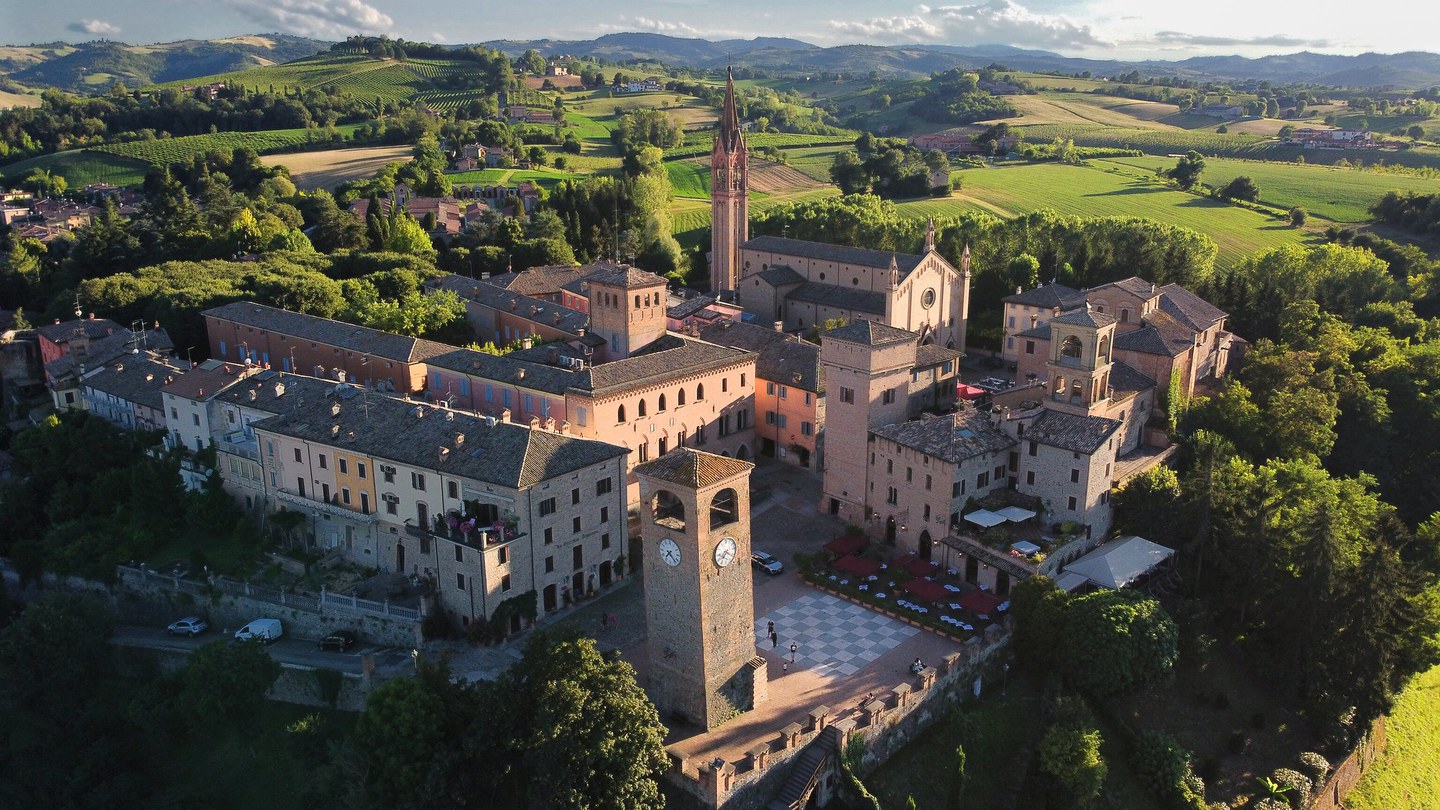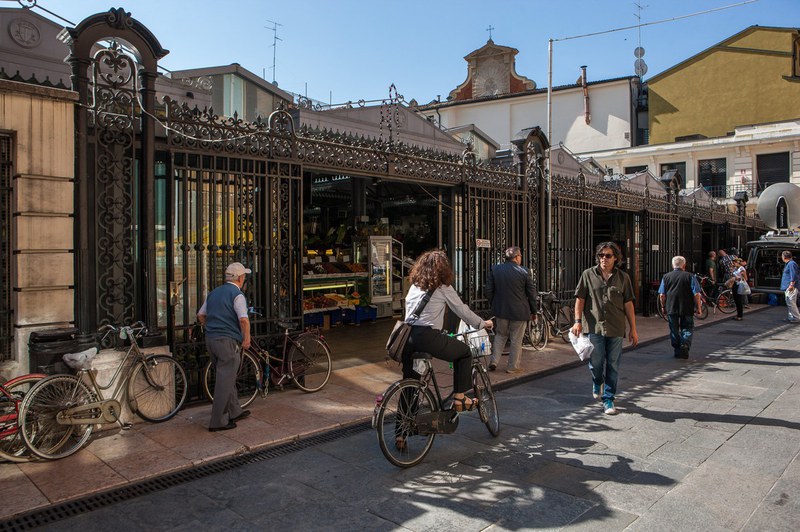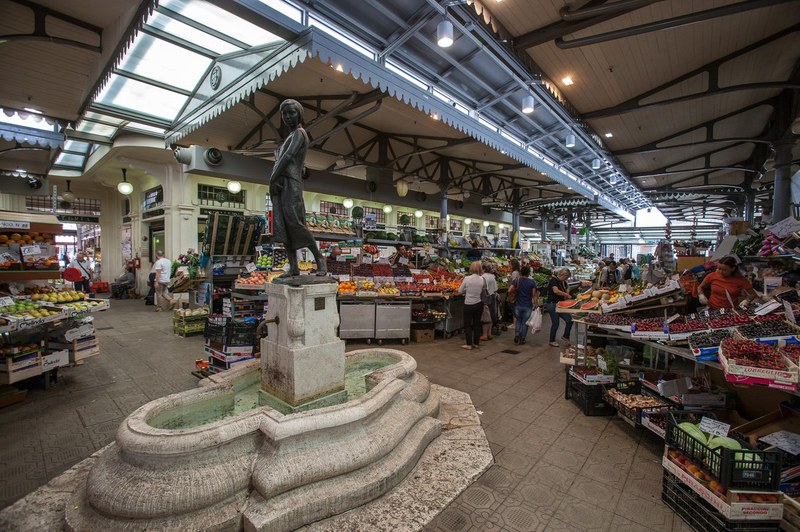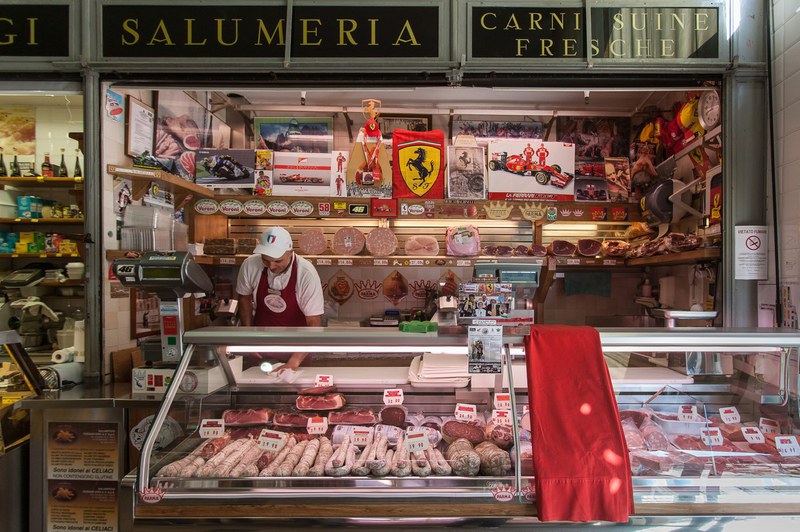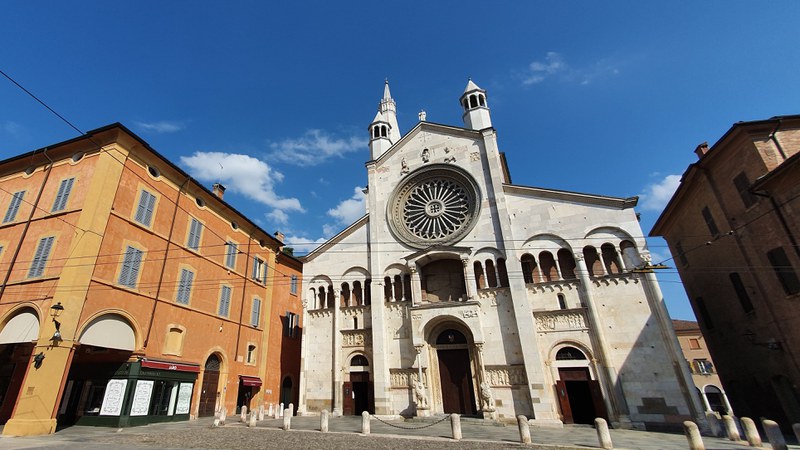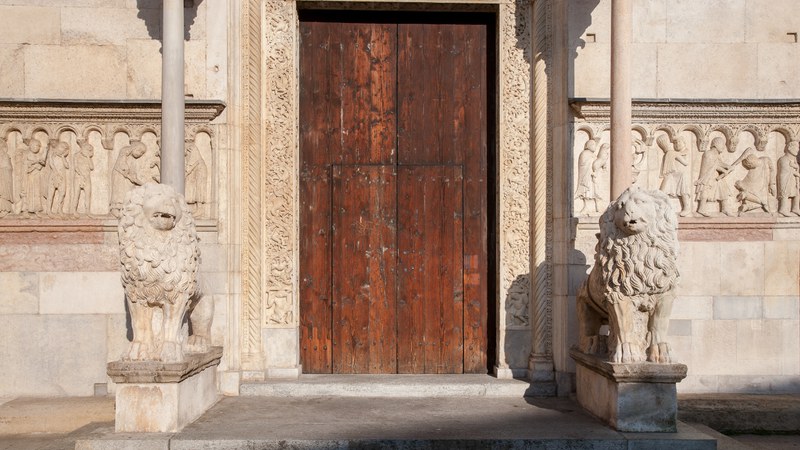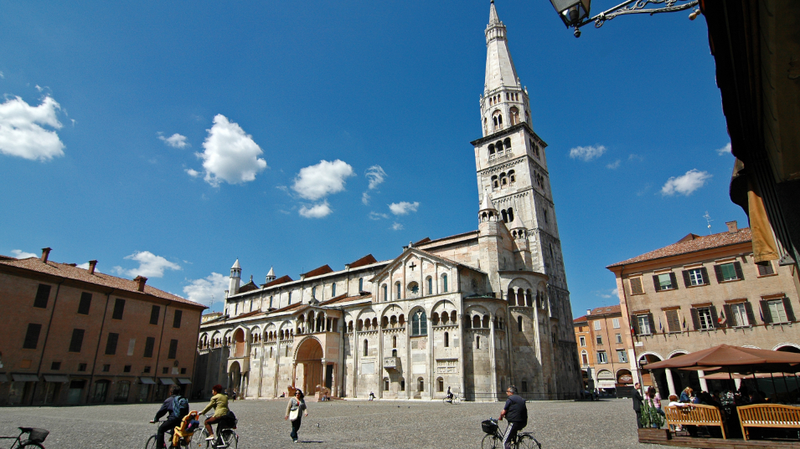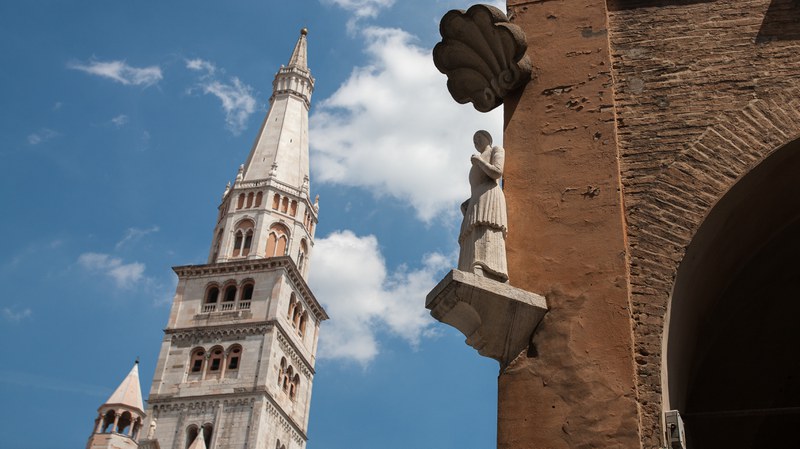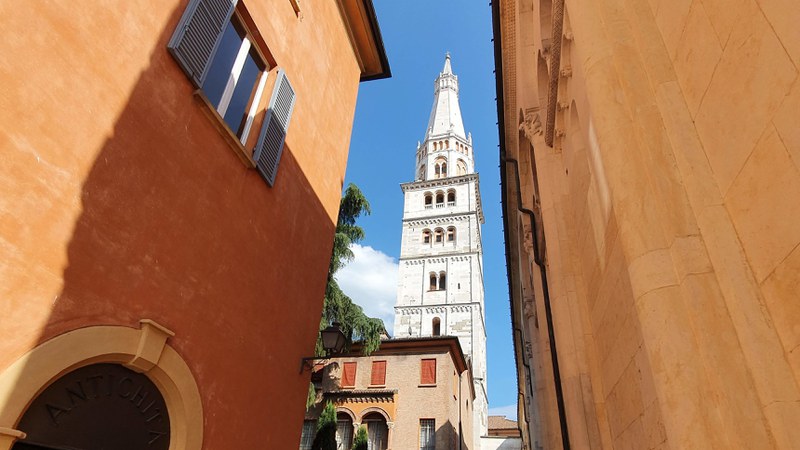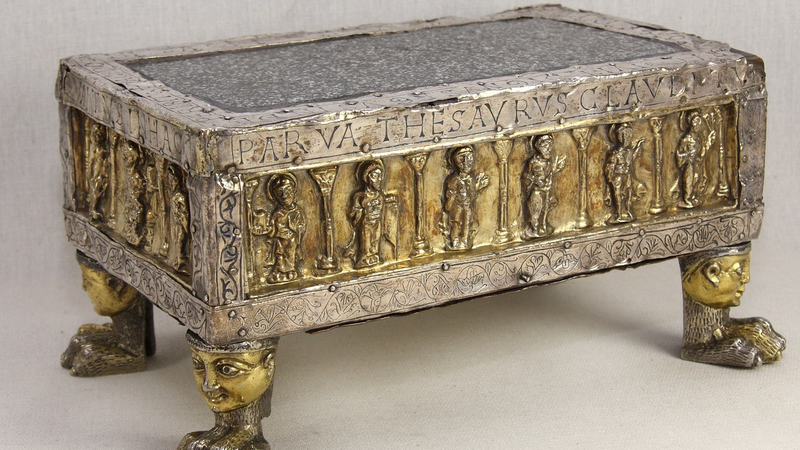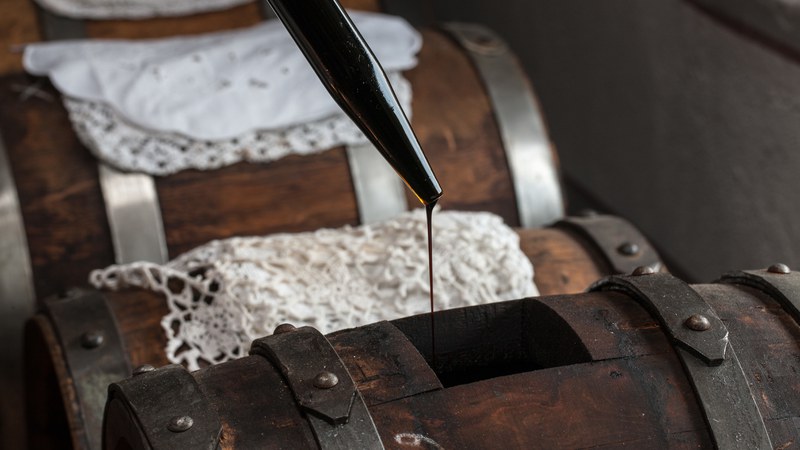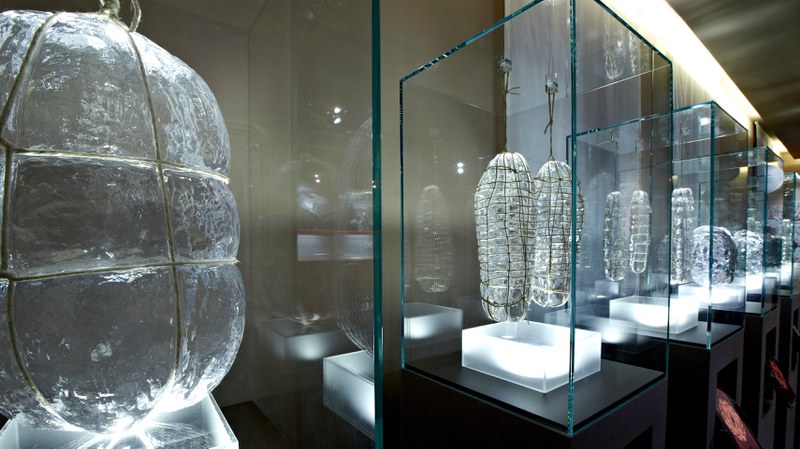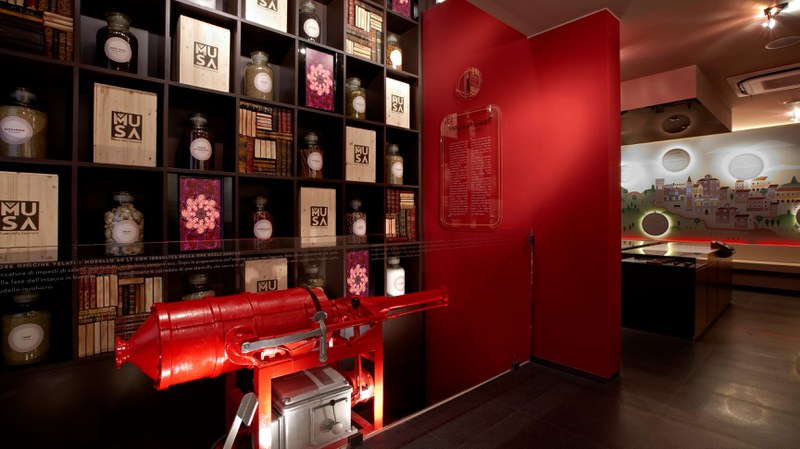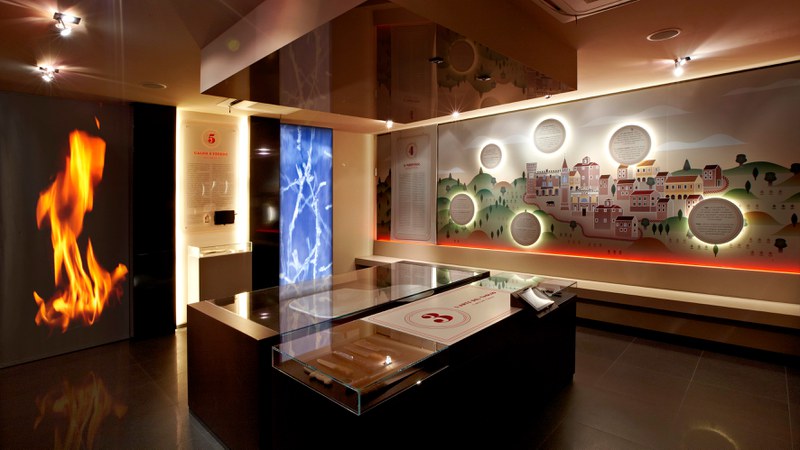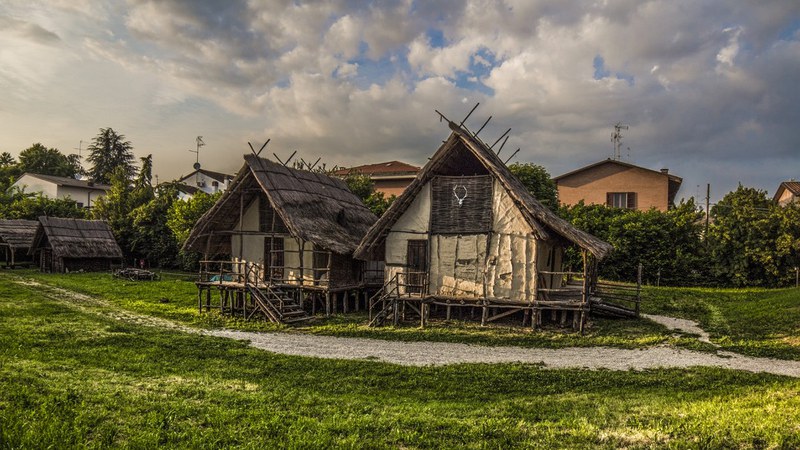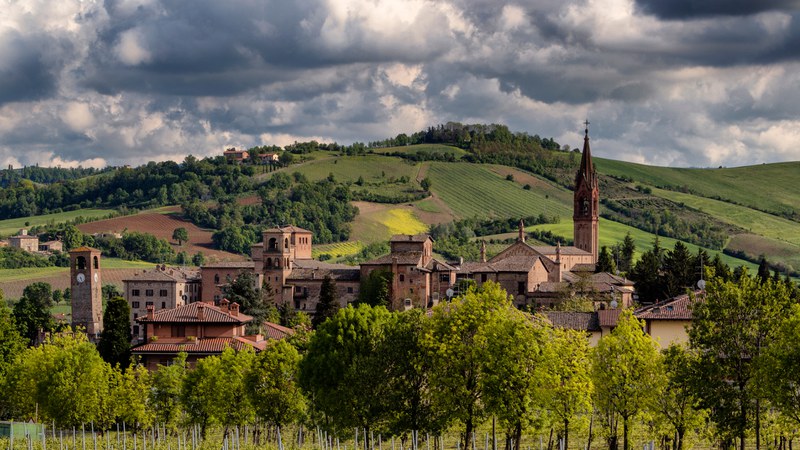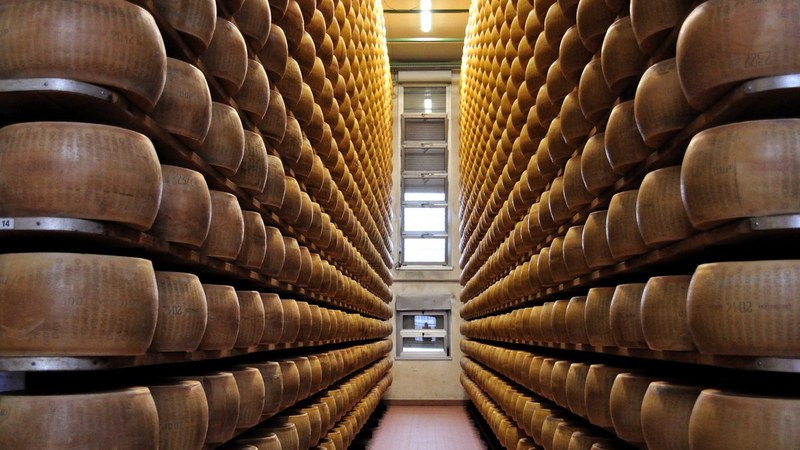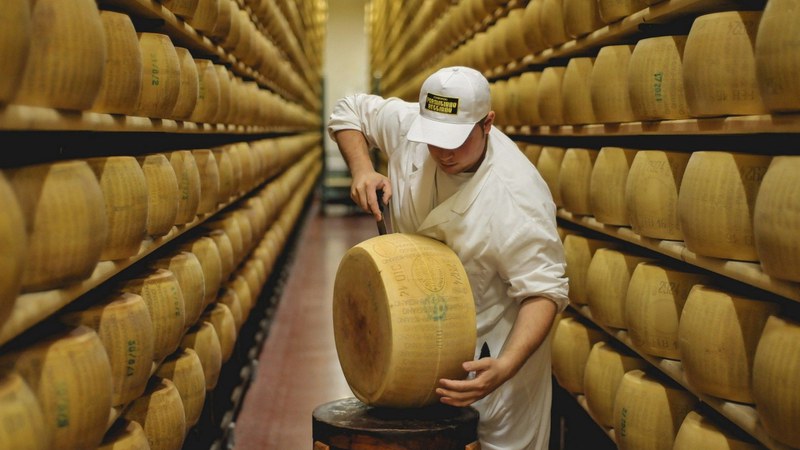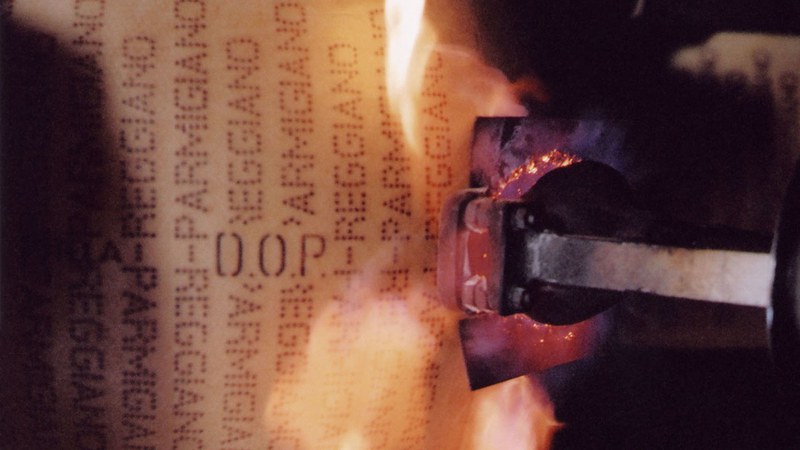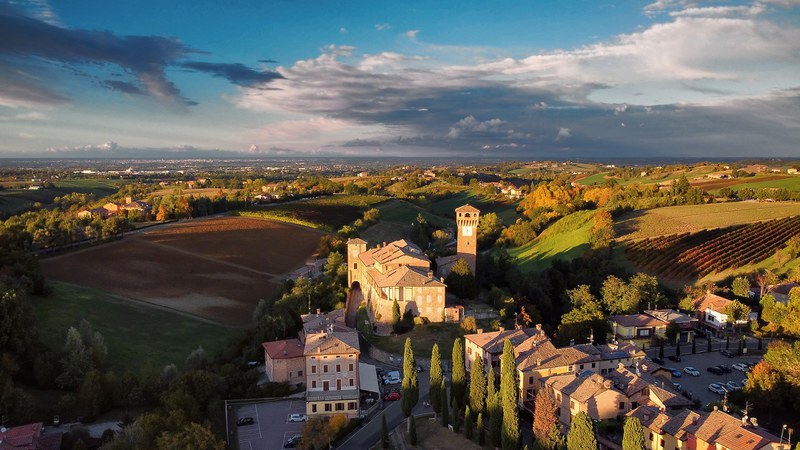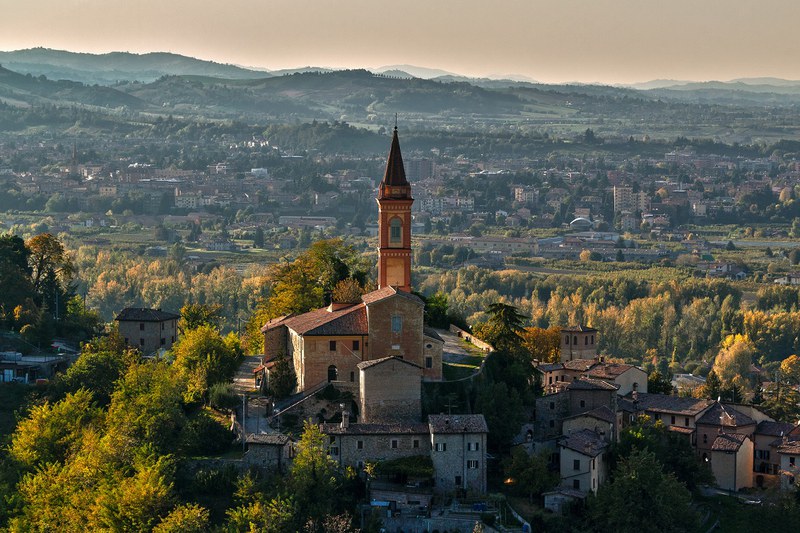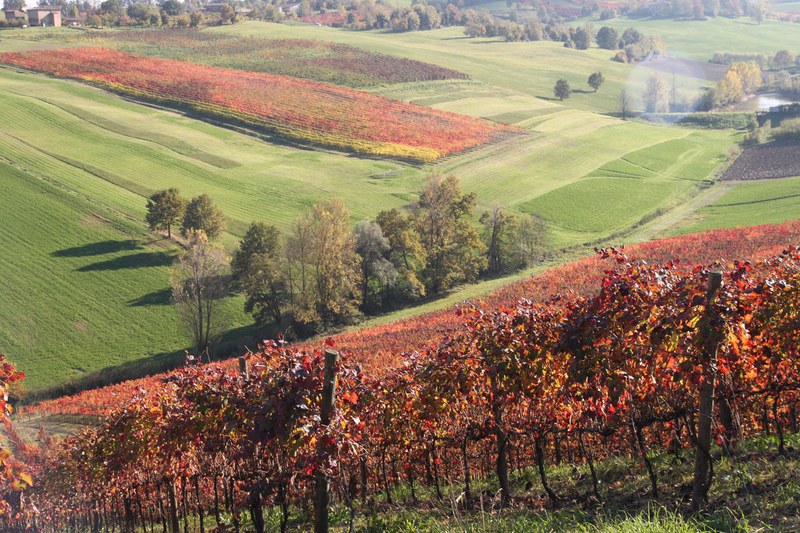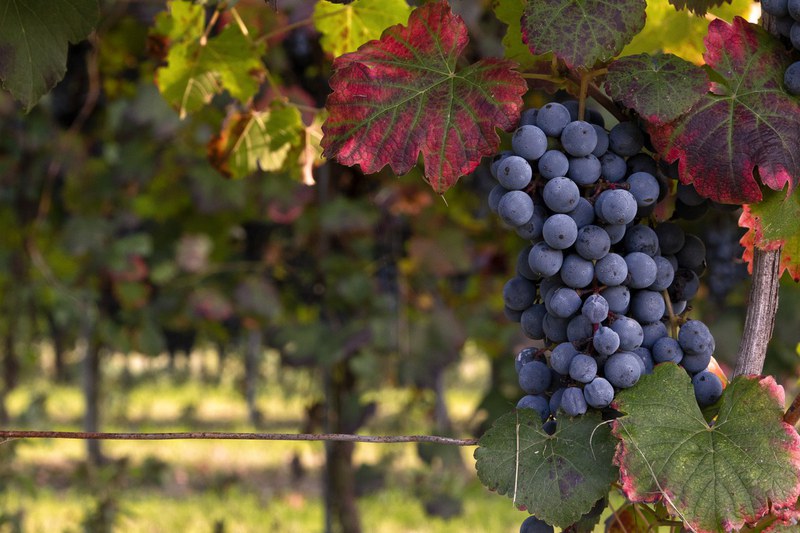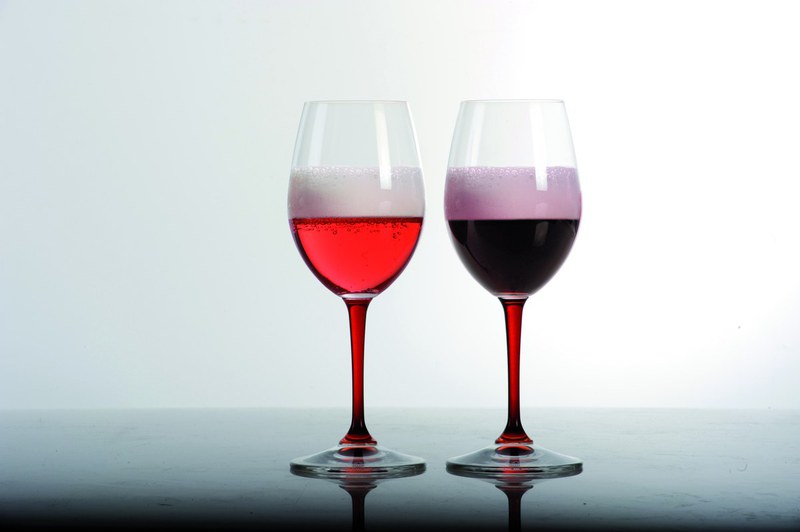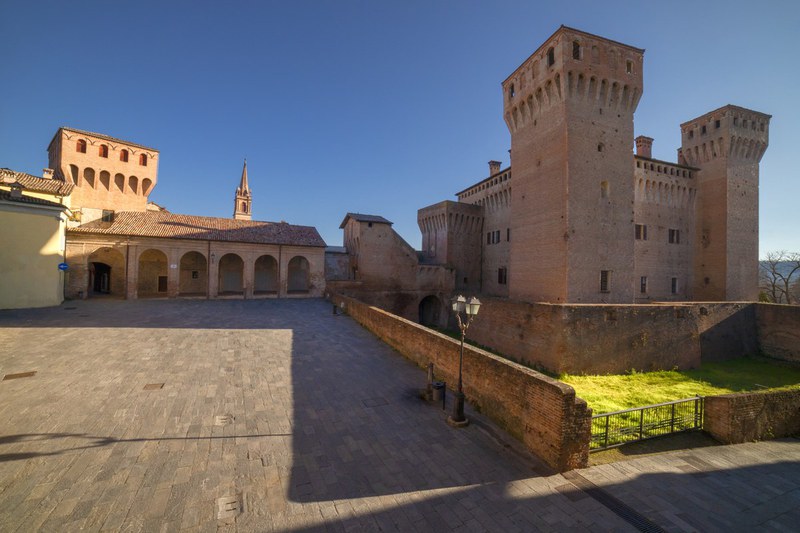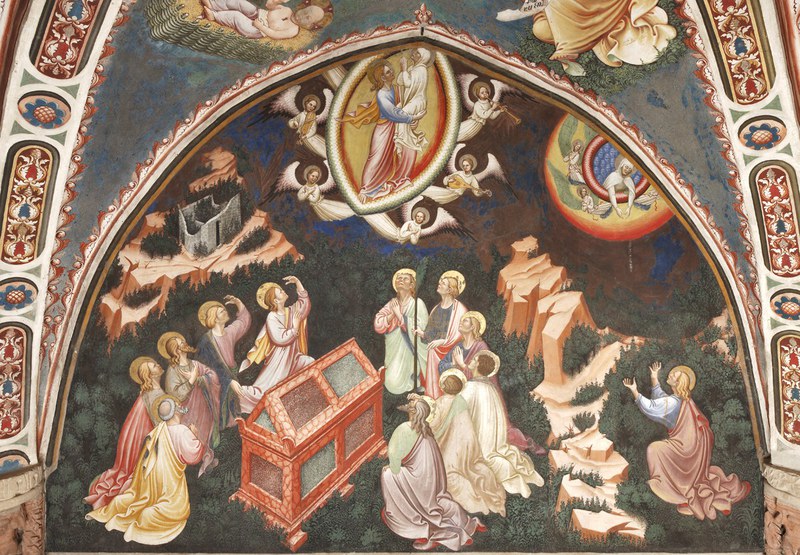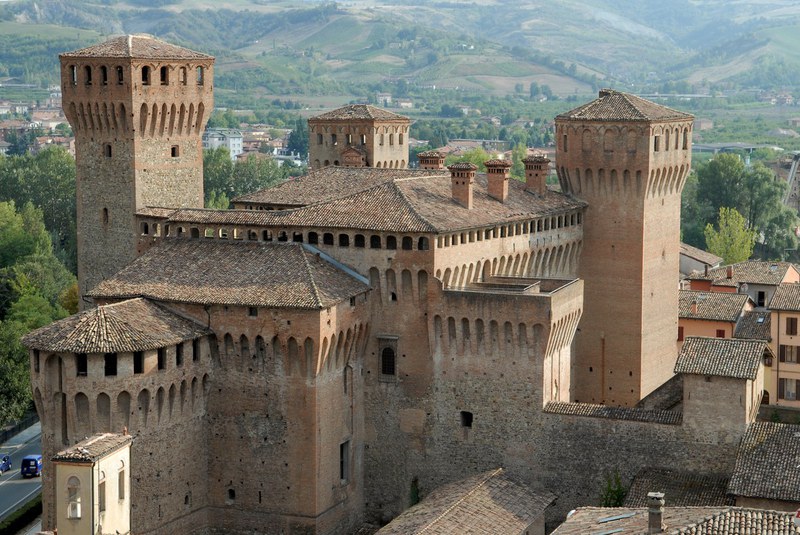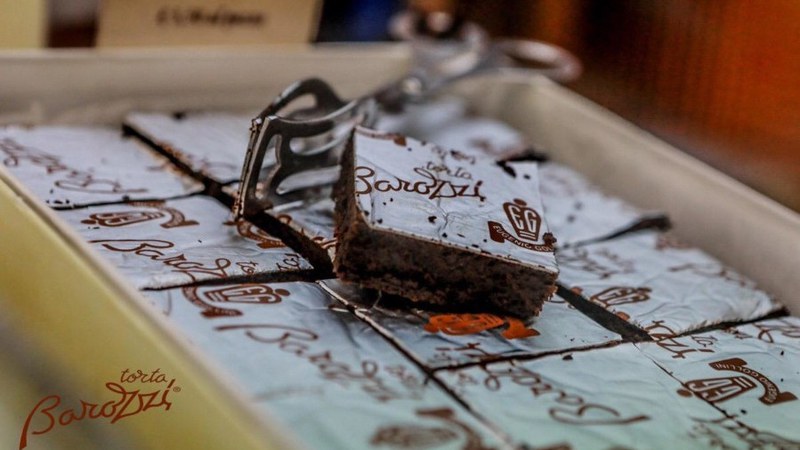Art and Good Food
This excursion is perfect for art and food lovers, combining a voyage among the Modena area’s most beautiful sights and the excitement of travel in search of good things to eat and drink.
This excursion is designed to combine the discovery of sites of great cultural and artistic interest with the pleasure of fine food. We’ve put together number of interesting ideas but we also offer open-ended tips for travelers who would prefer to explore on their own. If you’d like additional advice, don’t hesitate to get in touch.
Day 1 - morning
We begin in the old town with a visit to a group of Medieval Romanesque-style structures of unusual beauty: the Modena Cathedral, the Ghirlandina Tower, and Piazza Grande. Together, they were designated a UNESCO World Heritage Site in 1997.
The UNESCO site is striking for its grandeur and for its historical significance. Give yourself the time to take in the details and be astounded by the mastery of the designers, artists, and architects who created these works. A gem of Romanesque-style art, the Modena Cathedral amazed Modena’s citizens when it was built and it still does today. On one flank stands the elegant Ghirlandina Tower, a symbol of the city beloved by all of Modena.
Once you’ve visited the museum’s many rooms, continue on to the adjacent Palazzo Comunale, the site of town hall since medieval times. There is so much to admire in the Palazzo’s beautiful historic rooms, and the Municipal Vinegar Cellar, managed by the Traditional Balsamic Vinegar of Modena Consortium, is in the same building. Numerous “batteries” of barrels of precious traditional balsamic vinegar are stored here for aging.
And now let's think about lunch, next stop: the historic Albinelli Market!
From Piazza Grande, take a short walk across lively Piazza XX September, and you’ll find yourself at the Albinelli Market. Enter the market from its main entrance on Via Albinelli, where you’ll experience the excitement of everyday street life. Stroll among the stalls and stands where local specialties of every kind are on offer. Listen to the voices of people going about their days, and stop for lunch in one of the Market’s welcoming restaurants. You can choose either a quick bite or a more leisurely lunch to be savored at a table.
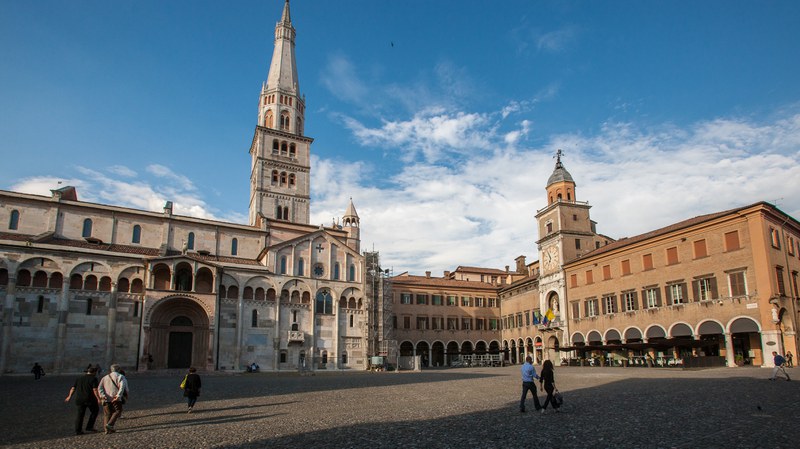
Itinerary
Day 1 - afternoon
If you’d like an alternative, consider a visit to one of the facilities where Modena PDO (protected designation of origin) prosciutto is made. Prosciutto is a dry-cured but uncooked ham with a sweet, intense bouquet and a flavor that is savory but not salty. If you’re looking for suggestions about where to go, get in touch with us. We’ll be happy to find the option that best meets your needs.
Along the way, make a brief stop in Montale for the Terramara di Montale Open-Air Archaeological Park and Museum and a journey back in time. Be aware, though, that the park is not always open, and we advise calling the park office before visiting.
Once you’ve returned from your time travel to remote prehistoric times, resume your culinary adventure in the wonderful world of traditional balsamic vinegar. The choices for a visit to a vinegar cellar are many and varied because of all the firms in the area that produce this local specialty. Another option would be to visit the Museum of Traditional Balsamic Vinegar in Spilamberto where you can discover the secrets of this elixir, unique among the world’s cuisines. In the Museum, you’ll learn about all the phases of the production of balsamic vinegar: the choice of grapes, the harvest and the pressing, the construction of the wooden barrels in which vinegar is aged, the cooking of the must (unfermented grape juice), and the role of the vinegar cellar. You’ll soon realize the complexity of the preparation and production of this special product—born long ago here in Italy and handed down ever since from generation to generation.
A complete multimedia installation introduces visitors to the history of the local people who, over time, both developed and perfected high quality charcuterie products and created an important culinary center, a source of pride for all Italians.
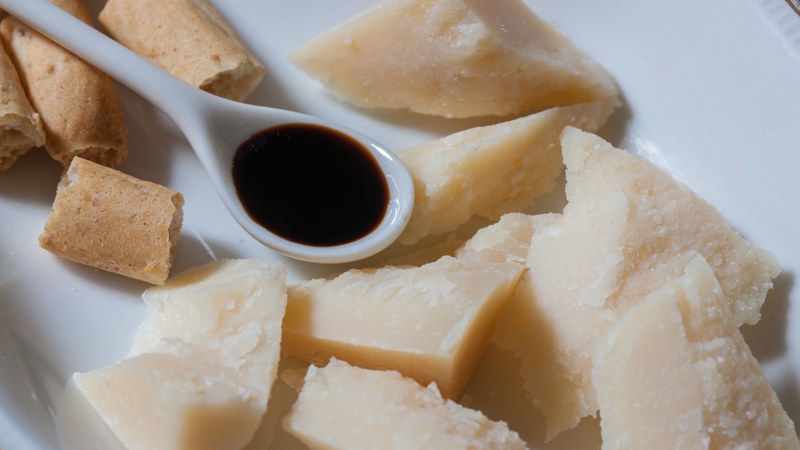
Day 2- morning
Grapes in this area aren’t grown solely for balsamic vinegar. In fact, the main product made from local grapes is wine which, in and around Modena, is synonymous with Lambrusco.
Let's move on to nearby Castelvetro, the area where PDO (protected designation of origin) is produced, and specifically to the village of Levizzano. There, we’ll visit Rosso Graspa, the Museum of Wine and Rural Society, located inside the castle.
After your visit to the museum, don't miss a stop in beautiful Castelvetro—perhaps for lunch.
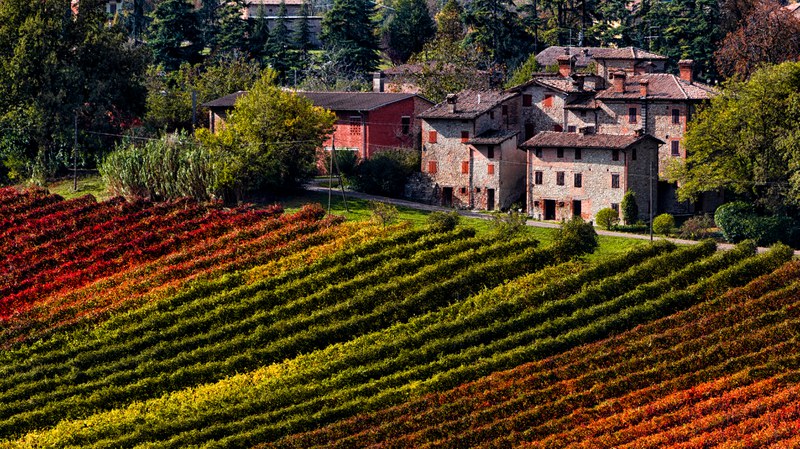
Itinerary
Day 2 - Afternoon
Once you cross the rolling hills of the Terre di Castelli (the “land of castles,” so named for the presence there of many ancient settlements and medieval strongholds), you’ll reach Vignola’s Rocca, a splendid 15th-century fortress whose architecture absolutely demands a visit. The fascinating atmosphere is a real blast from the past!
Don’t leave Vignola without tasting its famous Torta Barozzi, a local specialty cake with a long tradition, made with dark chocolate, decaffeinated coffee, almonds, and other ingredients. Torta Barozzi has made Vignola famous.
On this tour, the many intriguing stops along the way will introduce you to places with enormous historical and cultural importance in and around Modena and the Terre di Castelli as well as give you a chance to sample some of the most renowned local specialties. The list of things to do in this area is long, so don’t hesitate to contact us for advice. We’ll be happy to help choose the best options for your trip.


